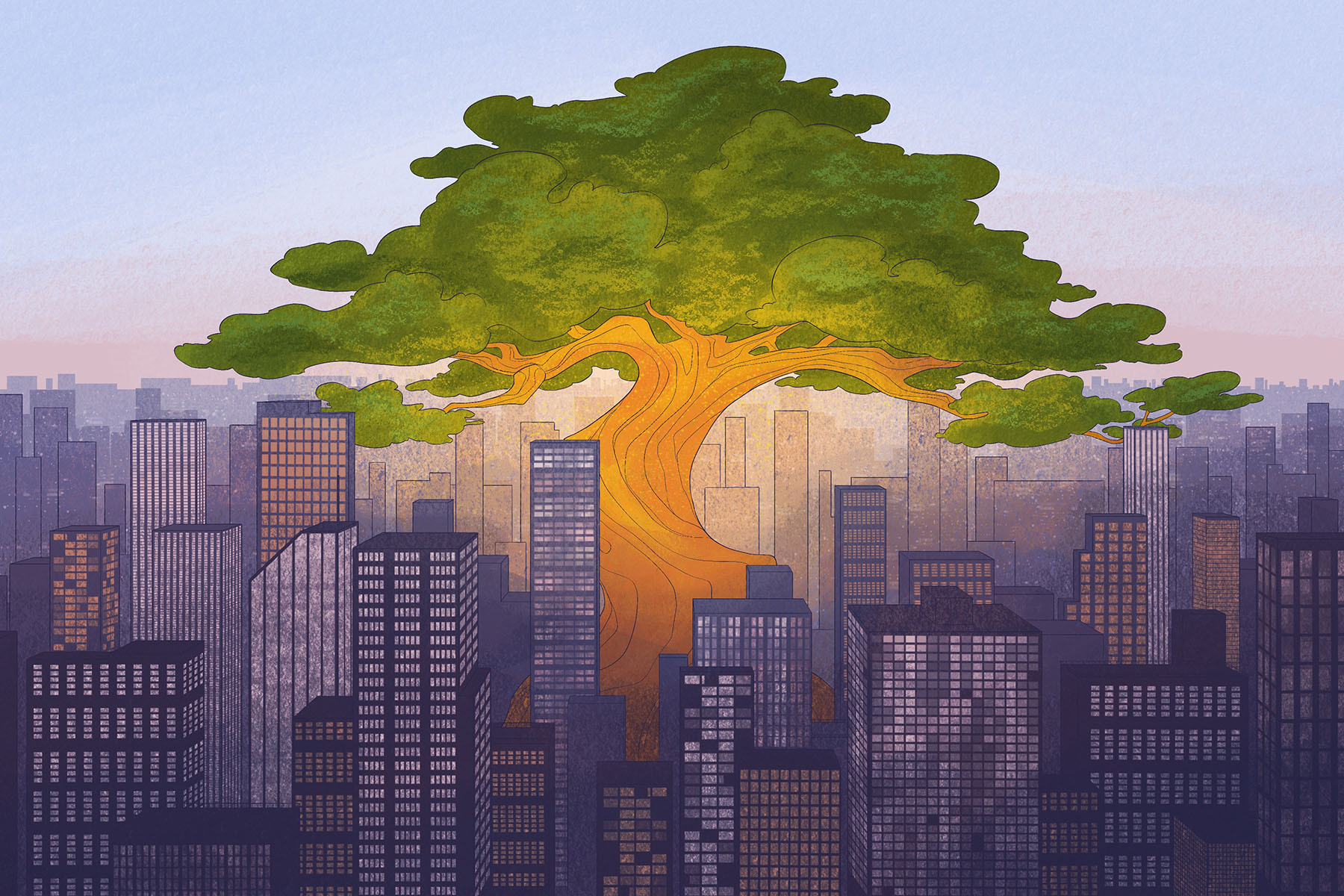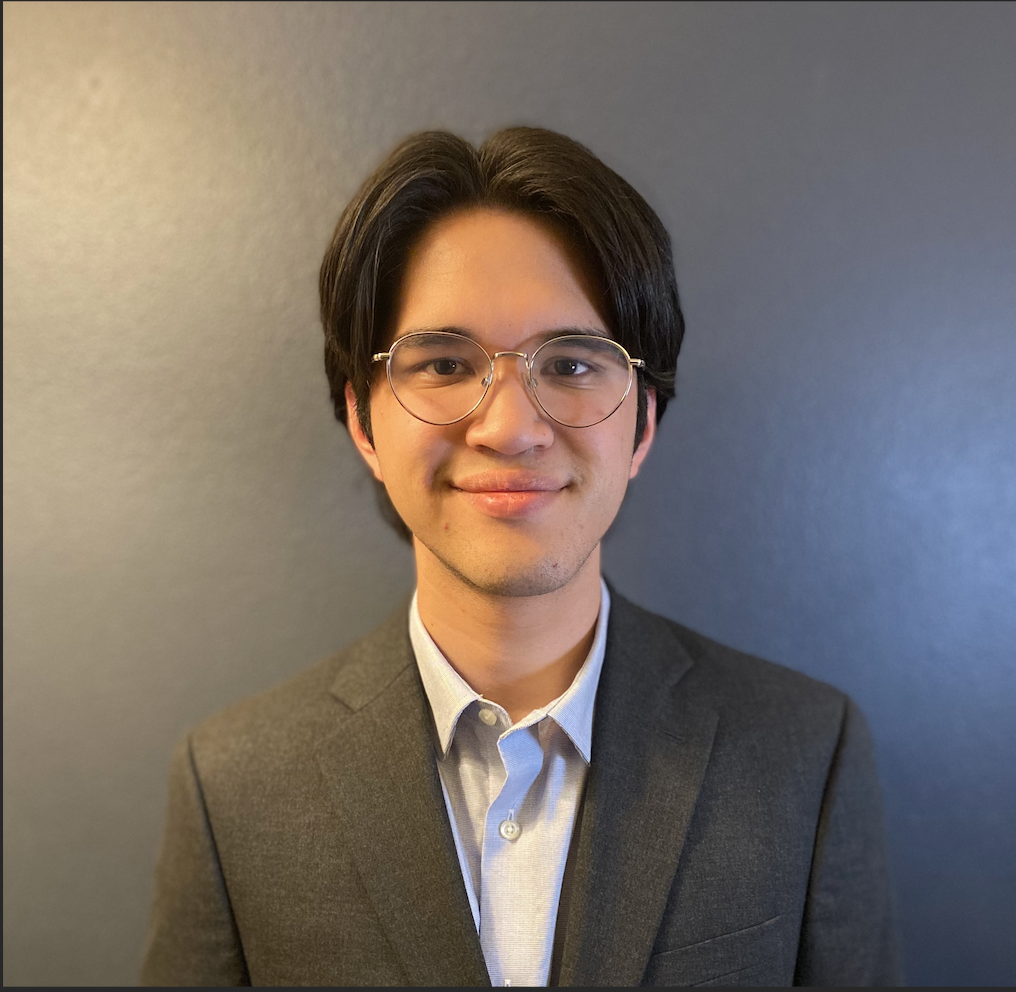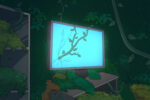It may be odd to consider hot summers as winter arrives, but with the new year rapidly approaching, it is important to consider what comes with it. Heat waves seem to be a regular occurrence nowadays, and urban areas are most susceptible to their dangerous impacts. Urban “heat islands” face significantly warmer summer temperatures relative to surrounding areas, and those temperatures can easily prove fatal. The strangely simple, yet severely under-appreciated solution lies in nature. Green spaces in public areas not only improve quality of life and emotional well-being but can also be instrumental in lowering urban temperatures and limiting the deadly consequences of summer heat.
Thanks to the ever-burdensome and worsening effects of climate change due to rising pollution levels, heat waves are occurring more frequently all around the world, and they are accompanied by various other problems such as fires, electrical blackouts, and heat stroke. Urban areas are particularly susceptible to these extreme weather events, as common urban building materials—concrete, brick and asphalt—are exceptionally good at trapping heat. As more and more people flock to urban centers, greater portions of the world’s population fall victim to the “heat island” effect. If a solution is not found quickly the consequences will be devastating.
The obvious solution is air conditioning, yet there is a painful irony to this quick fix. The excessive use of air conditioning units in a densely populated city overtaxes the electrical grid and causes everyone to lose power. In extreme heat, people will likely die without power or cooling; the 2021 heat wave in Oregon was termed a “mass casualty” event due to a high death count, as many of the victims were found in homes without air conditioning. Clearly, this solution isn’t as workable as it may appear on a surface level.
Heat-capturing building materials and aging power infrastructure are, of course, only a couple of many factors that cause cities’ higher temperatures relative to their rural and suburban counterparts. Apparently, the key problem is trees. Urban areas are so lacking in green spaces—areas of nature interwoven through an urban environment—that they are completely deprived of the benefits of a tree canopy. To combat rising summer heat, one could either invest in expensive heat-repellant materials, or simply limit the heat that hits those materials in the first place. Planting trees throughout an urban area creates a smaller-scale version of a forest canopy, providing shade and cooling to streets, homes, and citizens. This is a proven and highly effective solution.
Green spaces, in general, come with many varied benefits. Shade cover can lower surface temperatures by upwards of 25°F compared to unshaded surfaces. Furthermore, green spaces reduce energy use by making air conditioning less necessary, and save cities money on infrastructural maintenance by preserving pavement and asphalt from sun damage. Public parks and the mere proximity to nature incentivize citizens to engage in healthier and more physically active lifestyles, while simultaneously improving communal mental and emotional well-being by lowering stress, relieving anxiety, and offering a space for community interaction. The water gets cleaner, health issues like obesity and cardiovascular disease decline, and, of course, trees lower greenhouse gas emissions and improve air quality, thereby fighting climate change directly.
Planting trees is a slow process, and cities are losing tree cover quickly. According to the U.S. Forestry Service, cities are losing 29 million trees every year. Trees are slow to grow; and it will take years for them to provide sufficient coverage to effectively counteract the destructive footprints of heat islands. This long-term schedule necessitates urgent action, as present-day infrastructural investment must support the infrastructural needs of citizens ten years from now. As the number of trees continues to dwindle, urban areas must try to turn that trend around. The main problem with all of this, however, is that trees are neither being removed nor being planted equitably.
Certain areas have significantly higher rates of tree cover, leaving other, more barren parts of a city to boil. There are notable disparities in overall health between rich and poor areas, white and minority areas. This applies to tree coverage as well. If cities fail to reckon with the effects of redlining, housing discrimination, and inequitable infrastructural investment on the quality of life of their citizens, there will be no universal solution to heat islands; the disadvantaged will be left to die. There is also some concern over the idea of “green gentrification”, wherein proper and equitable investment in creating green spaces in disadvantaged areas increases the quality of life so much that the cost of living increases accordingly, forcing the original residents out in favor of higher-paying, likely white newcomers.
The intersection of race, housing and environmentalism just goes to show how inherently convoluted urban issues can be. Oftentimes planning and development take a back seat as our nation tries to create a good world for everyone. However, there is hope. Recent federal infrastructure bills devote funds towards tree equity, with the hope of combatting climate change and promoting community well-being. Big steps like this must be taken to make this increasingly chaotic world just a little bit safer. Drawing on the strength of nature to address these issues is more than an aesthetic preference; it is a powerful statement of commitment to a better future.

















